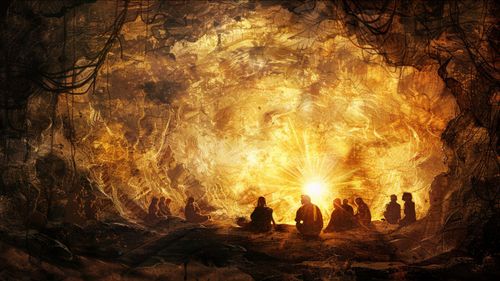Plato's Allegory of the Cave Explained in 2 Minutes: What it Means & Why it's Important
Mar 25, 2024 · 2 mins read
0
Share

Plato's allegory of the cave is a profound exploration of reality vs. perception, where shadows on a wall represent the limits of human understanding.
Written around 380 BCE, it's also one of the most important and influential passages of The Republic.
Save
Share
Imagine being chained in a dark cave all your life, where shadows cast by a fire are the only reality you know. Plato uses this scene to challenge our grasp of the true essence of things.
Save
Share
The moment one prisoner is freed and steps into the sunlight represents the painful yet enlightening journey of questioning and understanding the world beyond our immediate senses.
Save
Share
This allegory isn't just ancient philosophy; it's a timeless reflection on education's power to liberate the mind from the shackles of ignorance and dogma.
Save
Share
Plato suggests that those who have seen the light of truth have a duty to return to the cave and guide others, despite the resistance they may face from those still in the dark.
Save
Share
The cave is a metaphor for the world we inhabit, where sensory perceptions often cloud the underlying reality, and truth becomes a matter of perspective.
Save
Share
The journey out of the cave is arduous and represents the philosopher's quest for knowledge, emphasizing that understanding the true nature of reality requires effort and courage.
Save
Share
Plato's work is a call to examine the shadows on our walls—be they societal norms, media, or personal biases—and question whether they reflect the full spectrum of truth.
Save
Share
The allegory underscores the idea that enlightenment is a personal journey, suggesting that true understanding cannot be taught but must be experienced.
Save
Share
In today's world of information overload, Plato's cave challenges us to discern between the shadows and the light, urging us to seek wisdom beyond the surface.
Save
Share
0